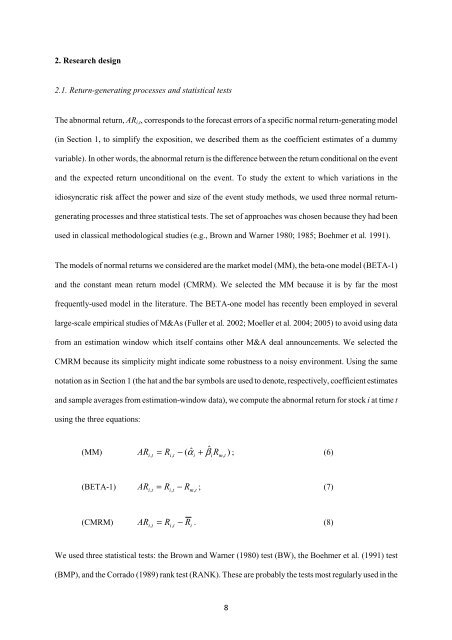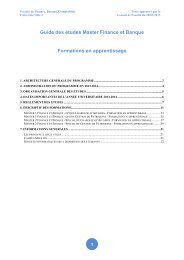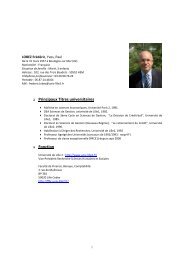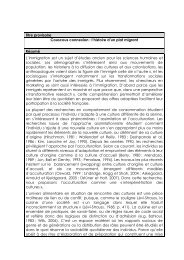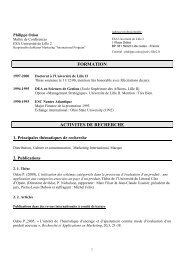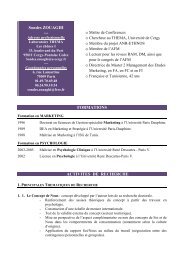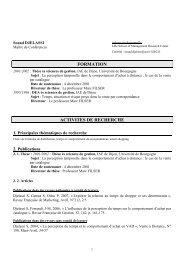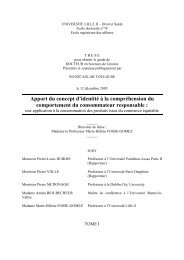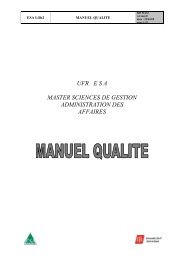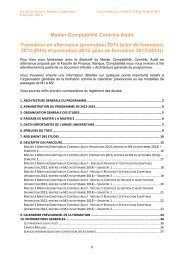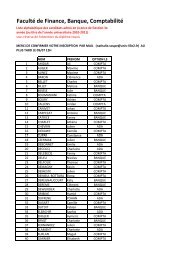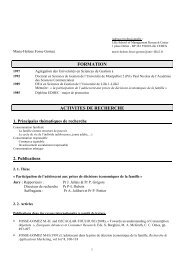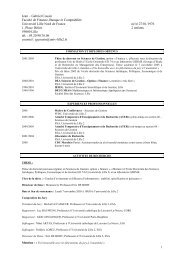Event Study
Event Study
Event Study
You also want an ePaper? Increase the reach of your titles
YUMPU automatically turns print PDFs into web optimized ePapers that Google loves.
2. Research design<br />
2.1. Return-generating processes and statistical tests<br />
The abnormal return, ARi,t, corresponds to the forecast errors of a specific normal return-generating model<br />
(in Section 1, to simplify the exposition, we described them as the coefficient estimates of a dummy<br />
variable). In other words, the abnormal return is the difference between the return conditional on the event<br />
and the expected return unconditional on the event. To study the extent to which variations in the<br />
idiosyncratic risk affect the power and size of the event study methods, we used three normal return-<br />
generating processes and three statistical tests. The set of approaches was chosen because they had been<br />
used in classical methodological studies (e.g., Brown and Warner 1980; 1985; Boehmer et al. 1991).<br />
The models of normal returns we considered are the market model (MM), the beta-one model (BETA-1)<br />
and the constant mean return model (CMRM). We selected the MM because it is by far the most<br />
frequently-used model in the literature. The BETA-one model has recently been employed in several<br />
large-scale empirical studies of M&As (Fuller et al. 2002; Moeller et al. 2004; 2005) to avoid using data<br />
from an estimation window which itself contains other M&A deal announcements. We selected the<br />
CMRM because its simplicity might indicate some robustness to a noisy environment. Using the same<br />
notation as in Section 1 (the hat and the bar symbols are used to denote, respectively, coefficient estimates<br />
and sample averages from estimation-window data), we compute the abnormal return for stock i at time t<br />
using the three equations:<br />
(MM) AR = R − ˆ α + ˆ β R ) ; (6)<br />
i,<br />
t i,<br />
t ( i i m,<br />
t<br />
(BETA-1) i t = Ri<br />
t − Rm<br />
t ; (7)<br />
AR , , ,<br />
(CMRM) ARi, t = Ri,<br />
t − Ri<br />
. (8)<br />
We used three statistical tests: the Brown and Warner (1980) test (BW), the Boehmer et al. (1991) test<br />
(BMP), and the Corrado (1989) rank test (RANK). These are probably the tests most regularly used in the<br />
8


